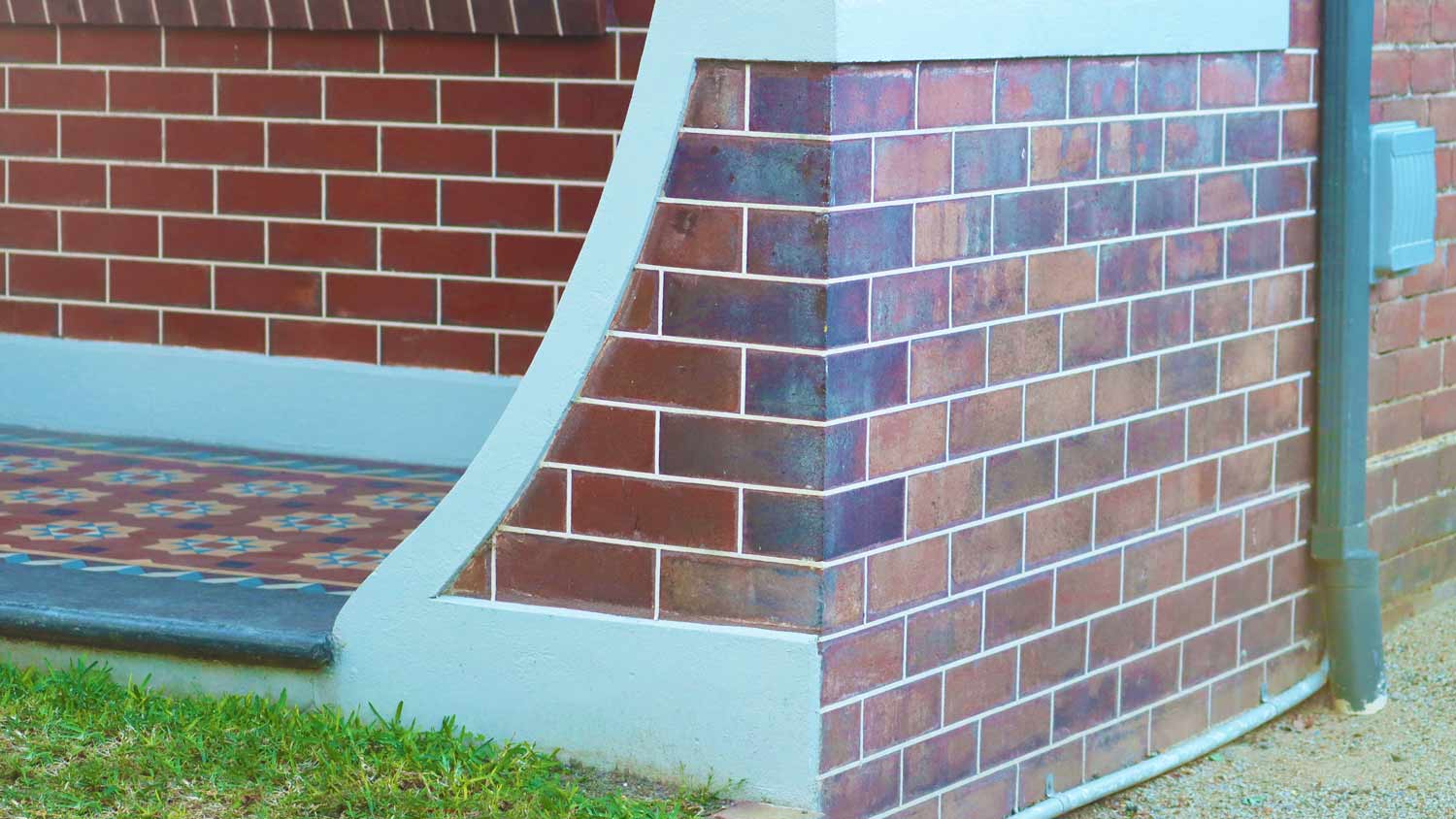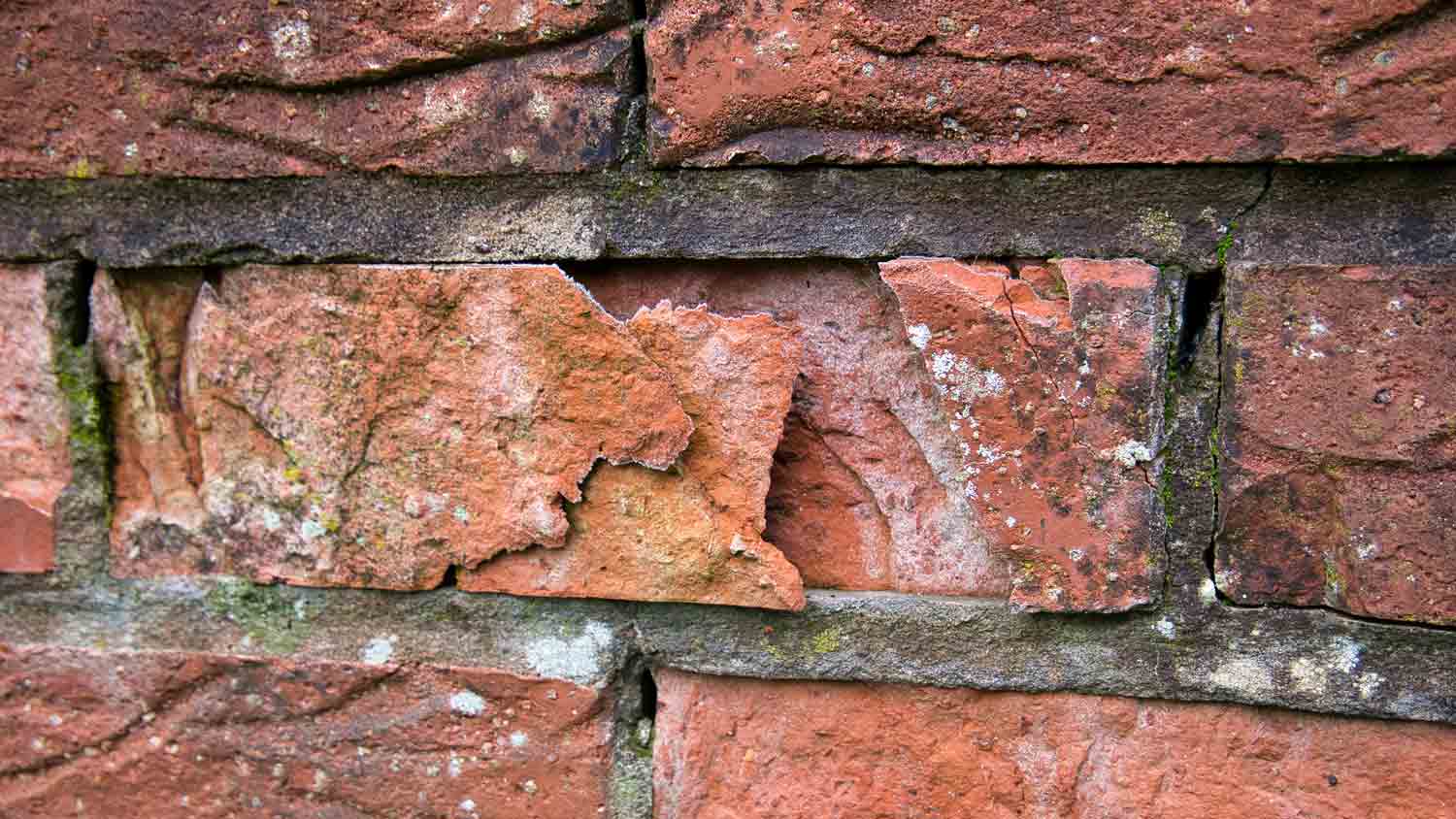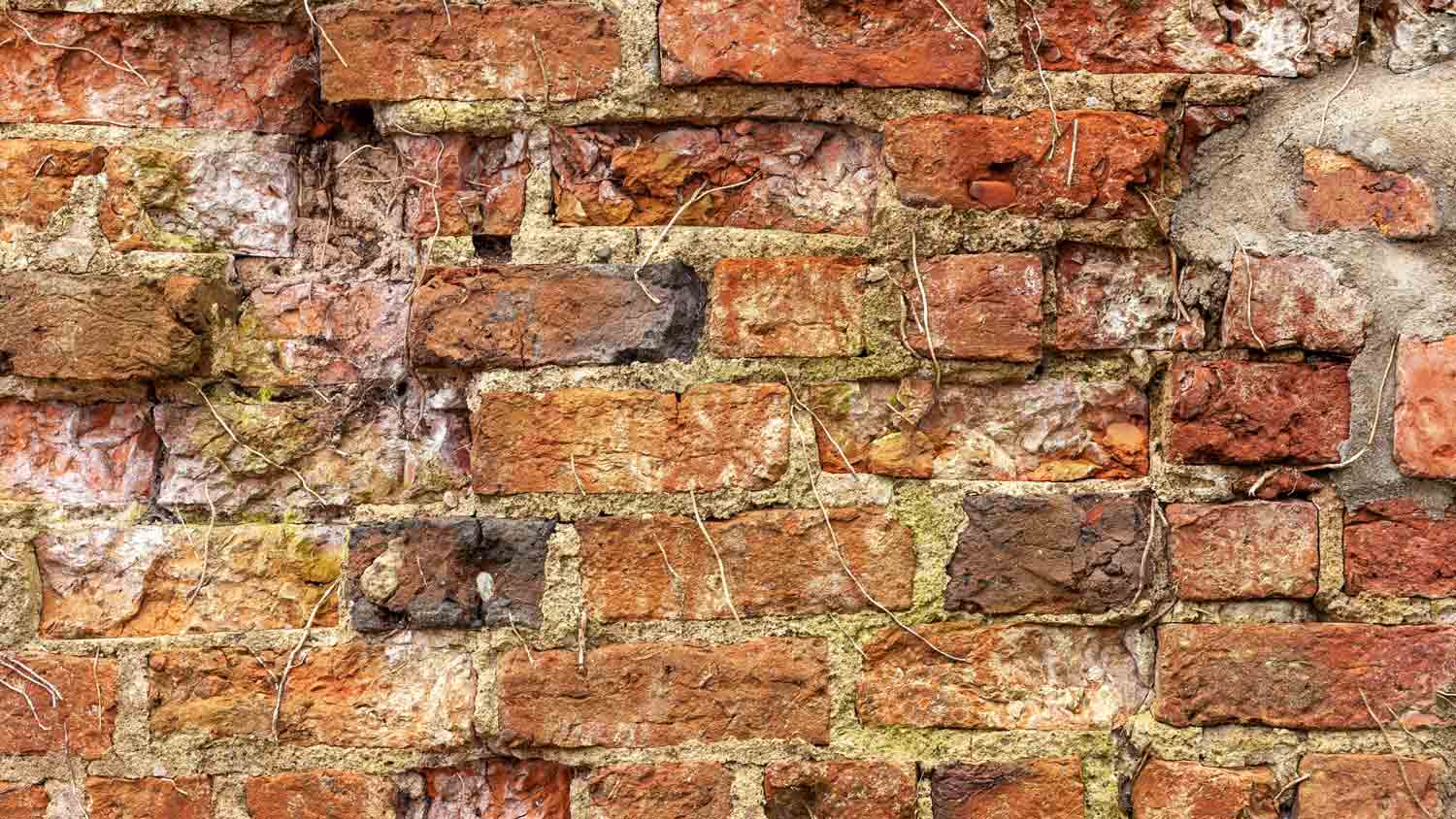
Need to repoint brick in your home to make your home look fresh and new? Use this guide to repointing brick cost to price out your project before starting.
Don’t crumble under pressure from these common masonry problems


White stains on masonry are usually caused by a phenomenon called efflorescence that will actually get worse if you try to remove it with water.
If you live in a climate with a freeze-thaw cycle, you'll likely notice chipping and flaking caused by brick spalling.
Replacing old, worn mortar protects your stone and underlying structure from water seepage.
Masonry work adds elegance and timeliness to properties. While durable, stones, bricks, and other masonry materials can still weaken, become damaged, or fail over time. While some masonry problems can be fixed with a little elbow grease, others require masonry professionals capable of performing restorations. Here's a look at the most common problems homeowners encounter with masonry.

Almost every homeowner with a brick home, patio, or walkway will experience some degree of efflorescence. If you've noticed a white, powdery substance on the surface of stones or brick, it's probably efflorescence. Depending on your climate, it can even appear brown, black, or yellow. Efflorescence is a natural phenomenon caused by salt deposits dissolving and evaporating. While it can happen on any stone surface, it's more common in high-moisture climates or areas.
The steps for removing efflorescence from brick are pretty straightforward, so most homeowners can tackle this task on their own. Efflorescence can be loosened using a dry, stiff-bristle brush. If this isn't enough to fully remove efflorescence, apply a masonry cleaning solution from a local hardware store. To prevent future efflorescence, apply a repellent sealer that protects against salt and water. Homeowners can also consider professional sealing services to ensure that masonry is properly protected.
In general, water should be avoided when removing efflorescence because moisture causes it to return after the area has dried. However, water is necessary if you're cleaning algae growth from stone. For algae, use water and a brush or a pressure washer to scrape away embedded algae from a stone or brick surface. Be sure to follow all guidelines for how to pressure wash brick to avoid causing damage.

Spalling is one of the most common brick problems. It occurs when a brick's surface begins to deteriorate due to age, weather, or wear and tear. While it can happen in any climate, it's more common in areas with extreme hot and cold temperatures that cause an annual freeze-thaw that stresses brick. If you notice brick flakes, chips, or crumbles that leave the inner layer of brick exposed, you likely have spalling at your home.
Start by removing any loose chunks of brick that are about to fall away in order to prevent them from causing damage to the surrounding area. While some homeowners may choose to patch brick cracks using sealant as a quick fix, the long-term solution should include:
Pulling out all spalled bricks.
Replacing missing bricks with new bricks and mortar.
Sealing the new brick with a masonry surface sealer.
For most homeowners, properly removing old brick and setting new brick is not a DIY task. Consider doing research on how to hire a masonry contractor to ensure you find the right kind of pro for the task.

Mortar is a bonding agent and building material typically made of sand, cement, and lime. It binds bricks and other stones. Its unique, pliable design gives it the flexibility needed to prevent cracking in masonry. Over time, mortar will naturally lose its bonding strength. In addition, moisture and a building's settling movements can also weaken mortar until it begins to peel away and separate from the stone.
To repair disintegrating mortar, you'll need to remove the existing mortar to create space for fresh mortar. Use a hammer drill to cut mortar from joints between stones. Next, add new mortar by following the manufacturer's directions for application and drying times. Finally, protect the mortar by applying a sealant over all of the joints. If you want to skip a step, look for mortar products containing built-in sealer.
If it appears the integrity of your brick or stone is compromised, call a professional to assess your masonry problems. If performed incorrectly, DIY repairs can damage masonry and brick. If bricks or stones require extensive repairs, be sure to call a masonry company near you if you don't know how to tuckpoint brick or replace mortar.
On average, brick wall repair cost ranges from $778 to $2,600. Depending on the types of bricks involved, labor may cost between $20 and $40 per square foot. A common task like repairing mortar can cost as little as $300. The average cost to repair cracks is around $500.
From average costs to expert advice, get all the answers you need to get your job done.

Need to repoint brick in your home to make your home look fresh and new? Use this guide to repointing brick cost to price out your project before starting.

Door or window lintel replacement costs $400 on average, but there are ways you can save. On the other hand, complicated work will increase costs considerably.

The cost to replace brick front steps depends on the type of brick, square footage, pattern, and more. Learn how much you may spend on this project.

A bowing foundation wall can quickly become a major structural problem for your home. Learn why your wall is bowing and what you can do to fix it.

Have a design idea for a stone walkway, walls, or steps? Learn how to cut stone and boost your home's curb appeal.

You don’t need power tools to get clean, accurate brick cuts. This step-by-step guide teaches you how to cut brick by hand using simple tools and a free afternoon.